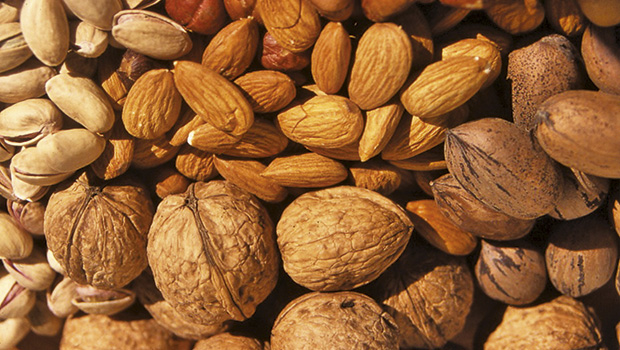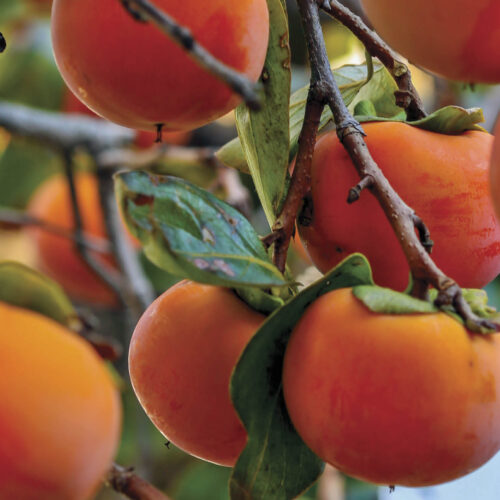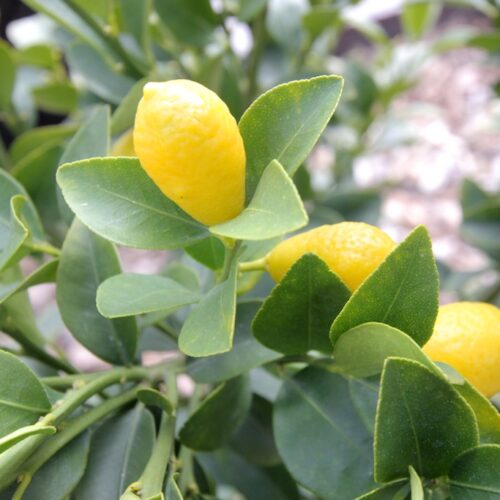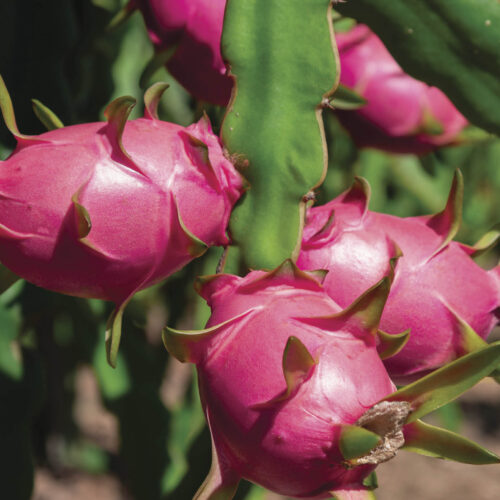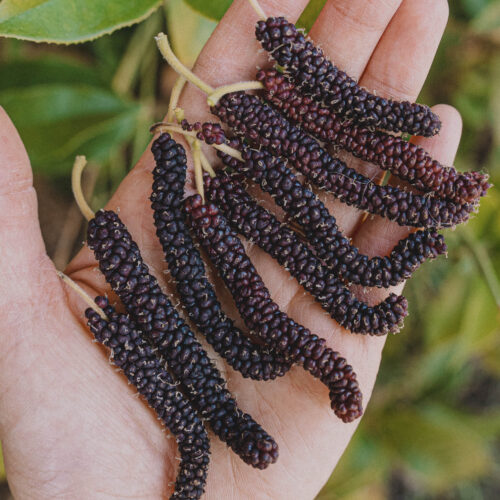Get cracking
2013-05-01T08:02:49+10:00
Nuts are bursting with health benefits and flavour, write GRAHAM and ANNEMARIE BROOKMAN.
Before humans took control of the world and eventually slumped in front of phones, televisions and computer monitors, we spent much time every day gathering and eating fresh food.
Our bodies had evolved to digest fruits, berries, nuts, grains and a relatively small amount of lean meat. If you return to a more active lifestyle and the foods your body was built to handle, you may well find that some of the main perils of modern living fade away.
Here are a few of the varieties of nuts that you might be able to grow in your own backyard.
Nuts for the garden
Pistachios
Reliable varieties: The best female cultivar (only females produce nuts) is ‘Sirora’. It can be pollinated by ‘Peter Male’ and others with codes that have become their names, including ‘14-4’ and ‘15-13’. These cultivars are grafted onto rootstocks such as Pistachia terebinthus (smaller and tougher) or P.interregima (bigger). ‘Sirora’ has a high chill requirement.
Pollination: Wind pollinated. One male can pollinate nine females.
Growing tips: Tolerant of alkaline, hot, dry sites and relatively poor quality irrigation water (conductivity levels to 2000ppm). Ensure soil zinc levels are adequate. Plant 5 x 6m apart. Harvest early autumn.
Harvest & storage: Knock onto tarps. Refrigerate until dehulled. Dehull then dry immediately.
Pests & diseases: Pistachio canker (dieback): disinfect tools between trees when pruning by dipping or wiping blades in tea tree oil or 1 per cent household bleach solution. Black olive scale: spray with white oil when trees are leafless and/or in summer. Applying sticky bands around trunks in the growing season helps prevent ants farming scale.
Almonds
Reliable varieties: ‘Californian Paper Shell’ requires ‘Sonora’ or ‘Fritz’ as pollinators. ‘Chellaston’ requires ‘Johnson’s Prolific’. Mainly grafted onto hybrid peach-almond rootstocks.
Pollination: Flower in winter and require honeybee pollination.
Growing tips: Tolerant of slightly alkaline soils but intolerant of waterlogging. Prefers warm, dry growing conditions with low humidity. Tolerant of relatively poor water quality (conductivity to 850 ppm). Traditionally, trees are trained into a vase shape but central leader training is also used.
Harvest & storage: Plant 6 x 7m apart. Harvest summer/early autumn.
Fallen nuts can be harvested or knocked onto tarps after nuts begin falling. Dehull and dry.
Pests & diseases: Spray before bud burst with either lime sulphur or Bordeaux mix, or copper hydroxide, to control shothole disease (Stigmina carpophila) and almond rust (Tranzchelia discolor). Net against cockatoos, galahs, crows, rosellas.
Macadamias
Reliable varieties: The best Macadamia tetraphylla cultivars include ‘Elinbah’ and ‘Cate’. The best M. integrifolia cultivars include ‘Hinde’ in temperate regions and ‘Keaau’ in the subtropics. The hybrid ‘A-16’ seems adaptable to both regions. M. tetraphylla accepts sandy soils and M. integrifolia clay soils.
Pollination: Insect pollinated, especially by honeybees. While good yields are possible without crosspollination, the best crops occur where there is some crosspollination of cultivars.
Growing tips: Macadamias are native species occurring from the subtropics to the wet tropics of eastern Australia, but established trees become frost tolerant. M. tetraphylla will successfully crop as far south as Hobart.
M. tetraphylla cultivars have thinner shells, less fat, taste better, and are more tolerant of the root disease Phytophthora, though they cope less well in heavy clay soils than M. integrifolia. Main harvest is late autumn.
Harvest & storage: Knock onto tarps after nuts begin falling. Dehull and dry. Use macadamia nut crackers.
Pests & diseases: While there are a number of potential insect pests such as fruit spotting bug and macadamia nut borer, damage may not warrant spraying. However, spraying with white oil may be necessary to control scale insects when ambient temperatures are about 25-28°C.
Hazelnuts
Reliable varieties: ‘Red Avelline’ is self-fertile and best for home gardens.‘Ennis’, ‘Butler’, ‘Wanliss Pride’ and ‘Cosford’ successfully crosspollinate. Propagate by digging up suckers or by layering. Best producers: ‘Tonda di Giffoni’, ‘Barcelona’, ‘Segorbe’ and the Australian selection ‘Tokolyi’, also known as ‘Brownfield Cosford’.
Pollination: Wind pollinated.
Growing tips: Ideal for temperate climates without hot summers, succeeding best in apple-growing districts. The very shallow root system must be well mulched with compost to 100mm. Requires good quality irrigation water (conductivity less than 700ppm). Plant 3 x 5m apart. Often pruned to vase shape on a single 1.5m stem. Harvest late summer, early autumn.
Harvest & storage: Can be swept after nutfall or knocked onto tarps after nuts begin falling. Dehull and dry.
Pests & diseases: Hazelnut Blight (Xanthomonas colylina): spray with lime sulphur or copper hydroxide before bud burst. Net against cockatoos.
Walnuts
Reliable varieties: ‘Serr’ and ‘Tehama’ are vigorous trees. These two cultivars, as well as ‘Chandler’ and ‘Hartley’, are all compatible pollen partners. ‘Hartley’ also pollinates ‘Vina’. The best trees are grown on black walnut (Juglans hindsii), rootstocks.
Pollination: Wind pollinated.
Growing tips: Best grown in temperate regions with cold winters and summers with low humidity. Unsuitable for the subtropics and inland regions with very hot or humid summers. Intolerant of irrigation water (conductivity must be less than 700ppm). Require a deep, fertile, well-drained soil. Supplementary boron, a micronutrient, will be required. Plant 8 x 9m apart. Walnut roots release juglone, which depresses growth of nearby trees and shrubs, apart from mulberries. Harvest early autumn.
Harvest & storage: Can be swept after nutfall or knocked onto tarps after nuts begin falling. Dehull and dry.
Pests & diseases: Spray trees with lime sulphur, Bordeaux mix or copper hydroxide before bud burst to control walnut blight (Xanthomonas juglandis). Net trees against cockatoos.
Pecans
Reliable varieties: ‘Cherokee’ is self-fertile and the best for home gardens. ‘Western Schley’ is a large tree, robust, self-fertile and productive. ‘Cheyenne (A)’ is pollinated by ‘Chicasaw’ and ‘Tejas (B)’.
Pollination: All cultivars are wind pollinated and for best results need a pollen partner. ‘Group A’ cultivars pollinate ‘Group B’ cultivars and vice versa. Specialist nurseries should be able to advise on good matches.
Growing tips: Need some winter chill, but less than walnuts. Enjoy warm dry summers, but demand good supplies of good quality water (maximum conductivity of 750ppm). Large trees; plant a minimum of 8 x 8m apart. Like walnuts, pecan roots release juglone and shells contain sufficient amounts to make them unsuitable for mulching. Harvest late autumn.
Harvest & storage: Can be swept after nutfall or knocked onto tarps after nuts begin falling. Dehull and dry.
Pests & diseases: Pecan stem borer may attack drought-affected stock, so keep trees watered and mulched in dry weather. Net against cockatoos, rosellas.
Chestnuts
Reliable varieties: ‘Reliance’ (early cropping), ‘Mahogany’ (mid-season) and ‘Prolific’ (late). ‘King of the Valley’ is a good, large nut. ‘Davis’, ‘Purdon’s Pride’, ‘Wandenberg’ and ‘De Coppi Maroni’ are also recommended.
Pollination: Crosspollination maximises crops but is not essential.
Growing tips: Australia’s freedom from chestnut blight gives us a privileged growing environment. Chestnuts are large trees requiring a temperate climate, regular moisture, and deep, fertile soil. Plant 8 x 8 metres apart. Harvest in autumn.
Harvest & storage: Harvest daily once nuts begin dropping. Remove burr. Can be refrigerated and stored for a week or so. For longer term storage, dip nuts in boiling water for two minutes, peel while still hot, and deep-freeze. They can also be dried for storage.
Pests & diseases: Harvesting daily prevents crop losses to fungi, birds and vermin. Planting in mounds in freely draining soil helps prevent Phytophthora root rot.

